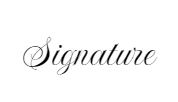Regulatory Compliance Gap Analysis
I. Introduction:
The regulatory compliance gap analysis aims to assess the extent to which our organization complies with relevant regulatory requirements and standards in [Your Company Name]. By identifying areas of non-compliance, we can implement necessary improvements to ensure adherence to legal and industry standards.
II. Purpose
The purpose of this Regulatory Compliance Gap Analysis is to systematically evaluate our organization's adherence to regulatory requirements and standards within our industry. By conducting this analysis, we aim to:
Identify Discrepancies: Assess current practices against regulatory requirements to pinpoint areas where our organization may be falling short of compliance.
Highlight Areas for Improvement: Document gaps between current practices and desired compliance levels to prioritize areas in need of corrective action.
Mitigate Risks: Prioritize identified gaps based on severity and potential impact to mitigate legal, financial, and reputational risks associated with non-compliance.
Enhance Compliance Efforts: Through root cause analysis, understand the underlying factors contributing to non-compliance and develop targeted strategies to address them.
Ensure Continuous Improvement: Establish a framework for ongoing monitoring and review to track progress, adjust strategies, and maintain compliance over time.
III. Current Practices Evaluation
Examination of existing policies, procedures, and processes related to regulatory compliance.
Assessment of the effectiveness of current compliance measures.
Identification of strengths and weaknesses in current compliance practices.
IV. Gap Identification
Comparison of current practices with regulatory requirements.
Documentation of discrepancies or gaps between current practices and desired compliance levels.
Prioritization of identified gaps based on severity and potential impact.
V. Root Cause Analysis
Investigation into the underlying causes of identified compliance gaps.
Consideration of factors contributing to non-compliance, such as resource constraints or lack of awareness.
Documentation of findings to inform corrective actions.
VI. Recommendations
Development of specific recommendations to address identified compliance gaps.
Proposal of corrective actions, including changes to policies, procedures, training, or resource allocation.
Alignment of recommendations with organizational goals and objectives.
VII. Implementation Plan
Formulation of a step-by-step plan for implementing recommended corrective actions.
Assignment of responsibilities and timelines for each action item.
Consideration of potential barriers to implementation and strategies for overcoming them.
VIII. Monitoring and Review
Establishment of mechanisms for ongoing monitoring of compliance levels.
Regular review of progress towards closing identified gaps.
Adjustment of strategies and actions based on monitoring and review
findings.
IX. Conclusion
Summary of key findings from the regulatory compliance gap analysis.
Emphasis on the importance of continuous compliance monitoring and improvement.
Acknowledgment of stakeholders involved in the analysis process.
X. Documentation and Reporting
Compilation of comprehensive documentation detailing the regulatory
compliance gap analysis process and findings.
Preparation of a formal report summarizing key findings, recommendations, and implementation plans.
Distribution of the report to relevant stakeholders for review and action.
XI. SIGNATURE
Ensure that [Your Company Name] Compliance Checklist is regularly reviewed and updated to reflect changes in laws, regulations, and business operations. Compliance is an ongoing process that requires continuous attention and improvement.

Compliance Officer
[Your Company Name]
Date:

















































